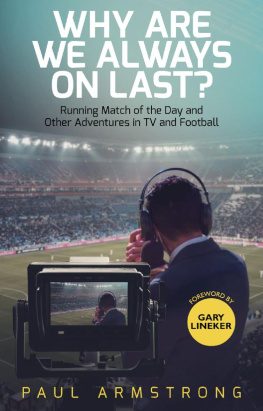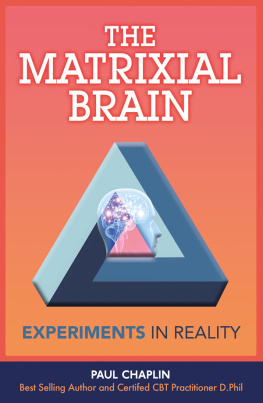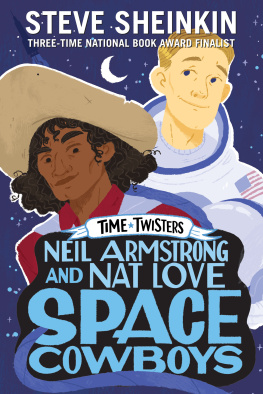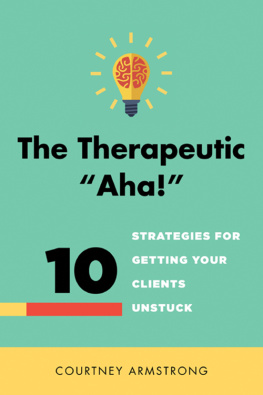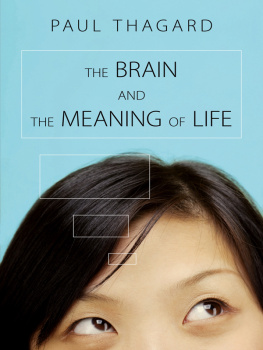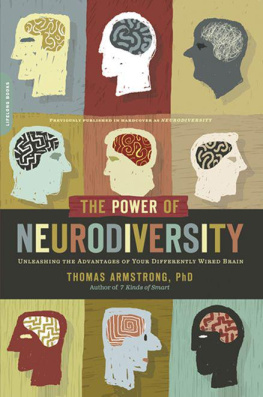Paul B. Armstrong - Stories and the Brain
Here you can read online Paul B. Armstrong - Stories and the Brain full text of the book (entire story) in english for free. Download pdf and epub, get meaning, cover and reviews about this ebook. year: 2020, publisher: Johns Hopkins University Press, genre: Romance novel. Description of the work, (preface) as well as reviews are available. Best literature library LitArk.com created for fans of good reading and offers a wide selection of genres:
Romance novel
Science fiction
Adventure
Detective
Science
History
Home and family
Prose
Art
Politics
Computer
Non-fiction
Religion
Business
Children
Humor
Choose a favorite category and find really read worthwhile books. Enjoy immersion in the world of imagination, feel the emotions of the characters or learn something new for yourself, make an fascinating discovery.

- Book:Stories and the Brain
- Author:
- Publisher:Johns Hopkins University Press
- Genre:
- Year:2020
- Rating:5 / 5
- Favourites:Add to favourites
- Your mark:
- 100
- 1
- 2
- 3
- 4
- 5
Stories and the Brain: summary, description and annotation
We offer to read an annotation, description, summary or preface (depends on what the author of the book "Stories and the Brain" wrote himself). If you haven't found the necessary information about the book — write in the comments, we will try to find it.
Stories and the Brain — read online for free the complete book (whole text) full work
Below is the text of the book, divided by pages. System saving the place of the last page read, allows you to conveniently read the book "Stories and the Brain" online for free, without having to search again every time where you left off. Put a bookmark, and you can go to the page where you finished reading at any time.
Font size:
Interval:
Bookmark:
Stories and the Brain
The Neuroscience of Narrative
PAUL B. ARMSTRONG

2020 Johns Hopkins University Press
All rights reserved. Published 2020
Printed in the United States of America on acid-free paper
9 8 7 6 5 4 3 2 1
Johns Hopkins University Press
2715 North Charles Street
Baltimore, Maryland 21218-4363
www.press.jhu.edu
Library of Congress Cataloging-in-Publication Data
Names: Armstrong, Paul B., 1949 author.
Title: Stories and the brain : the neuroscience of narrative / Paul B. Armstrong.
Description: Baltimore : Johns Hopkins University Press, 2020. | Includes bibliographical references and index.
Identifiers: LCCN 2019031189 | ISBN 9781421437743 (hardcover) | ISBN 9781421437750 (paperback) | ISBN 9781421437767 (ebook)
Subjects: LCSH: Narration (Rhetoric)Psychological aspects. | Neurosciences and the arts.
Classification: LCC P301.5.P75 A76 2020 | DDC 809.9/23dc23
LC record available at https://lccn.loc.gov/2019031189
A catalog record for this book is available from the British Library.
Special discounts are available for bulk purchases of this book. For more information, please contact Special Sales at .
Johns Hopkins University Press uses environmentally friendly book materials, including recycled text paper that is composed of at least 30 percent post-consumer waste, whenever possible.
For Tim, Maggie, and Jack
I am glad to thank the many colleagues, students, and friends who generously helped me with this book. Its errors and shortcomings are of course my own. Terence Cave, Jakob Lothe, and Jim Phelan responded to my earliest ideas with welcome encouragement and important criticisms and suggestions that had a formative influence on the shape this project eventually took. Nancy Easterlin asked hard questions about my argument at an early stage that forced me to think more rigorously and precisely about a number of key issues, and I am deeply in her debt. As the project neared completion, Steve Mailloux and Don Wehrs took time from their overcommitted lives to read the entire manuscript, and their responses at this late stage were invaluable. Among the many other friends and colleagues with whom I have discussed the ideas in this book, I am especially grateful to Marty Hoffman, Ann Kaplan, Sowon Park, Ben Morgan, Kay Young, Ellen Esrock, Karin Kukkonen, Elaine Auyoung, John Lutterbie, Richard Gerrig, Rita Charon, and George Smith. I also benefited greatly from the careful readings the manuscript received from the two anonymous referees as well as from the faculty editorial board at Johns Hopkins University Press. Their suggestions as well as good advice from my editor, Catherine Goldstead, provided important guidance to my final round of revision and rewriting.
My research and teaching have always informed each other, and that was especially the case with this project. Working with neuroscience concentrators in my undergraduate seminar on neuroaesthetics and reading at Brown has been one of the ways in which I have stayed in touch with the scientific community. These young scientists are smart and very well trained, and I have learned much from their knowledge of the field as well as from their sharp eye for the weaknesses of a scientific argument or the limitations of a particular experiment. I have also been gratified by their enthusiasm for conducting interdisciplinary conversations about big issues concerning art, culture, and our cognitive lives that go beyond the focus of their laboratory work. Directing Carolyn Rachofskys honors thesis on the neuroscience of metaphor for her biology concentration started me thinking about the contradictions in this research that I analyze in this book. I have also learned much from the graduate students whose research on cognitive topics Ive had the privilege to advise, especially Dorin Smith, Sarah Brown, and Fadwa Ahmed. The students in my courses on narrative theory, phenomenology, and the novel may also recognize in this book many ideas that I have tested on them over the years.
I also learned much from the thoughtful questions I received from various audiences who heard presentations from my work in progress. I am especially grateful to the Cognitive Futures in the Humanities community, whose meetings in Durham, Oxford, and Stony Brook provided forums for trying out my ideas and opportunities for discovering exciting research I might not otherwise have encountered. I also benefited from questions and conversations after talks I gave at the International Association of Literary Semantics meeting in Krakow, the English Language and Literature Association of Korea conference in Seoul, the meeting of the Crisis and Beyond research group in Uppsala, and the Future of Literary Studies conference at the Norwegian Academy of Science and Letters in Oslo. I am grateful as well for the chance to present my work to the Literature and the Mind group at the University of California, Santa Barbara, and at the Robert J. and Nancy D. Carney Institute for Brain Science at Brown.
It is harder to express what I owe to my children, Tim, Maggie, and Jack, to whom I have dedicated this book. I have been surprised to discover over the years that being a parent is a more important part of who I am than I ever thought it would be. I owe most, however, to Beverly, for many things besides what she contributed to this project. The play of her mind has taught me what a joy conversation can be.
Stories and the Brain
HOW STORIES CONFIGURE experience and organize events in time is an especially intriguing and important example of how literature plays with the brain. As I argued in my previous book on neuroscience and art (2013), reading a literary work typically sets in motion to-and-fro interactions between experiences of harmony and dissonance. A novel, poem, or play may reinforce and refine our sense of the worlds patterns through the symmetry, balance, and unity of its forms, or it may disrupt and overturn our customary syntheses by transgressing established conventions and refusing to satisfy our expectations about how parts fit together into wholes. These kinds of interaction between harmony and dissonance in aesthetic experiences help to negotiate a basic contradiction that is fundamental to our cognitive livesthe contradiction between our need for pattern and constancy and our equally crucial need for flexibility and openness to change. The ability of the brain to play with these competing imperatives is also evident in our capacity to tell and follow stories. For example, plots convert the one thing after another of passing moments into meaningful patterns that draw on, support, and shape our cognitive habits for building consistency and making connections. But the twists and turns in a story also hold our attention by surprising us and compelling us to remain open to the possibility that we may need to reconsider and revise our sense of the order of things. The productive imbalances between the formation and dissolution of patterns in the brain make possible this play between the building and breaking of patterns in narrative, even as the construction and disruption of patterns in the stories we tell each other contribute to the brains balancing act between pattern and openness to change.
This book offers a neurophenomenological model of narrative that charts the correlations between our lived, embodied experiences as tellers and followers of stories and the neurobiological processes that underlie and constrain these interactions. Building on the work of phenomenological theorists of reading and narrative (especially Wolfgang Iser and Paul Ricoeur), I construct an account of narrative as an experience-based interaction between the production and reception of figurative patterns. As I explain in the first chapter, experience is already prefigured because understanding is always a process of seeing-asa recursive, configurative operation of pattern building that characterizes vision, reading, and all other cognitive processes. Narratives take up prefigured aspects of experience (including culturally shared conventions, assumptions, and practices) and reconfigure them into as-if patterns of various kinds (Once upon a time... and they lived happily ever afteror not!). The experience of reading or listening to a story may in turn prompt the recipient to refigure his or her understanding of the world, and the cycle can then begin again through which storytellers and audiences shape, exchange, and reshape their experiences.
Next pageFont size:
Interval:
Bookmark:
Similar books «Stories and the Brain»
Look at similar books to Stories and the Brain. We have selected literature similar in name and meaning in the hope of providing readers with more options to find new, interesting, not yet read works.
Discussion, reviews of the book Stories and the Brain and just readers' own opinions. Leave your comments, write what you think about the work, its meaning or the main characters. Specify what exactly you liked and what you didn't like, and why you think so.



